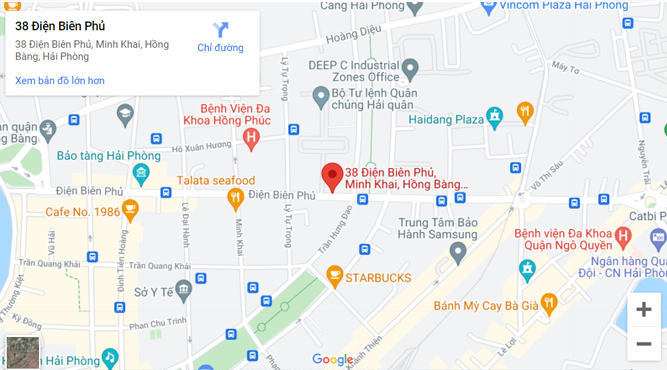| Activity news VHO |
Hydrographic work in the implementation of the United Nations Convention on the Law of the Sea 1982 |
|
| Đăng 23/07/2021; | |
|
The United Nations Convention on the Law of the Sea (UNCLOS) 1982, ratified on April 30, 1982 marked the result of 9 years of negotiations at the Second Law of the Sea Conference. 3 of the United Nations (from 1973 to 1982) to develop a new international legal instrument on seas and oceans, in line with the common interests of nations.
UNCLOS 1982 is considered as the "Constitution on the seas and oceans", consisting of 17 parts, 320 articles and 9 annexes, which comprehensively stipulates the legal status of the seas as well as the rights and obligations of the seas. landlocked or landlocked or geographically disadvantaged in the use, exploitation and management of seas and oceans. This document not only inherits previous international treaties on the sea, but also codifies customary international regulations as well as new development trends in the use and exploitation of seas and oceans. According to the International Hydrographic Organization (IHO), hydrography is an applied science that solves technical problems in measuring and describing the physical characteristics of seas and oceans as well as forecasting their changes. from time to time, with the basic purpose of serving maritime safety and supporting activities at sea, economic development, marine safety and security, scientific research and environmental protection. Currently, hydrographic surveying is serving effectively in the realization and implementation of the contents and provisions of the 1982 UNCLOS. Through surveying, measuring and charting activities. has actively supported UNCLOS 1982 in handling technical issues, including: Determining the extent of sea areas under sovereignty, sovereign rights and jurisdiction of coastal states, including archipelagic states (baseline, internal waters, contiguous zone, exclusive economic zone and continental shelf); delimitation of overlapping maritime boundaries between adjacent and opposite states; determine the outer limit of the continental shelf beyond 200 nautical miles; serving the exploitation of marine resources and laying submarine cables and pipes; deploying maritime safety and security; enforce the law at sea and protect the marine environment. In Vietnam, surveying and measuring work effectively serve the planning of overlapping sea areas, contributing to the protection of sovereignty over sea and islands and national economic development, notably: Coordinate measurement implementation. Surveying, determining baselines used to calculate the width of Vietnam's territorial sea, exclusive economic zone and continental shelf according to UNCLOS 1982, providing a legal basis for the fight to protect sovereignty and sovereign rights, jurisdiction and national interests in the overlapping and disputed maritime areas in the East Sea; settlement of maritime delimitation issues (Delimitation of the Gulf of Tonkin between Vietnam and China; delimitation of historic waters between Vietnam and Cambodia; delimitation of the exclusive economic zone with Indonesia -nesia, Thailand…); determine the outer limit of the continental shelf beyond 200 nautical miles, submit it to the United Nations Commission on the Limits of the Continental Shelf; deploying activities to develop marine economy and ensure safety and security in the waters of Vietnam. UNCLOS 1982 is of undeniable importance in today's international legal life. This document has really become a solid legal basis for defining the rights and obligations of coastal states and dealing with sea and ocean related issues. In the future, hydrographic work will continue to be an effective tool to implement and concretize the contents of UNCLOS 1982, especially in planning sea areas and settling disputes at sea. |
Other news
-
 The delegation of the Vietnam Hydrographic Office worked with the British Defense Attaché in Vietnam on the field of Hydrography (00:00, 20/01/2021)
The delegation of the Vietnam Hydrographic Office worked with the British Defense Attaché in Vietnam on the field of Hydrography (00:00, 20/01/2021)
-
 Simplify administrative procedures on surveying and cartography to create favorable conditions for people and businesses (00:00, 13/09/2021)
Simplify administrative procedures on surveying and cartography to create favorable conditions for people and businesses (00:00, 13/09/2021)
-
 Develop regulations on sharing and common use of cartographic data (00:00, 13/09/2021)
Develop regulations on sharing and common use of cartographic data (00:00, 13/09/2021)
-
 Using unmanned aerial vehicles to create topographic maps The Institute of Geodesy and Cartography has researched and widely applied unmanned aerial vehicles (UAVs) to serve the work of making large- (00:00, 13/09/2021)
Using unmanned aerial vehicles to create topographic maps The Institute of Geodesy and Cartography has researched and widely applied unmanned aerial vehicles (UAVs) to serve the work of making large- (00:00, 13/09/2021)
-
 Finalize the draft Strategy for the development of surveying and cartography industry (00:00, 13/09/2021)
Finalize the draft Strategy for the development of surveying and cartography industry (00:00, 13/09/2021)





